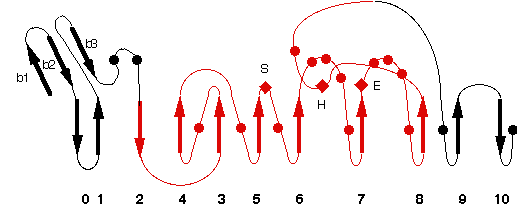7CEE
Name : Crystal structure of mouse neuroligin-3
Revelation date : 24-Feb-2020
Family : Neuroligin
Gene_locus : mouse-3neur
PDB file : ESTHER: header of PDB entry RCSB: Full entry
Comment
Yamagata, A., Yoshida, T., Shiroshima, T., Maeda, A., Fukai, S.
Ligand :
References (1)
| Title : Canonical versus non-canonical transsynaptic signaling of neuroligin 3 tunes development of sociality in mice - Yoshida_2021_Nat.Commun_12_1848 |
| Author(s) : Yoshida T , Yamagata A , Imai A , Kim J , Izumi H , Nakashima S , Shiroshima T , Maeda A , Iwasawa-Okamoto S , Azechi K , Osaka F , Saitoh T , Maenaka K , Shimada T , Fukata Y , Fukata M , Matsumoto J , Nishijo H , Takao K , Tanaka S , Okabe S , Tabuchi K , Uemura T , Mishina M , Mori H , Fukai S |
| Ref : Nat Commun , 12 :1848 , 2021 |
| Abstract : Yoshida_2021_Nat.Commun_12_1848 |
| ESTHER : Yoshida_2021_Nat.Commun_12_1848 |
| PubMedSearch : Yoshida_2021_Nat.Commun_12_1848 |
| PubMedID: 33758193 |
| Gene_locus related to this paper: mouse-3neur |
Representative scheme of Prolylcarboxypeptidase structure and an image from PDBsum server

